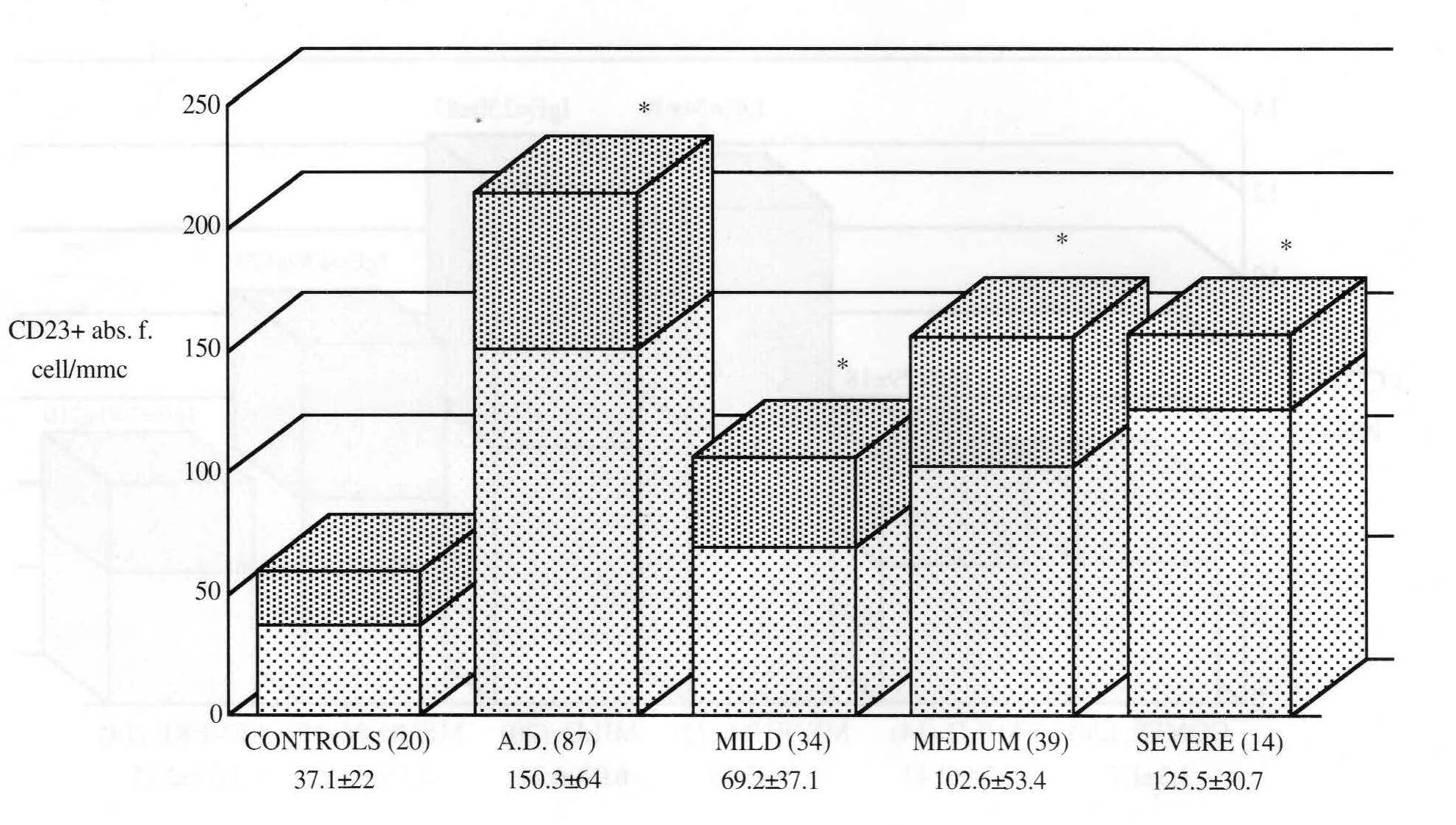Atopic dermatitis in children. CD23 as a marker of the disease.

Downloads
How to Cite
Abstract
The role played by the immune system in the pathogenesis of atopic dermatitis (AD) was confirmed by the increased serum levels of IgE, eosinophil cationic protein (ECP) and cytokines, as well as by the increased circulating CD23+ cells. This led to consider such immunological parameters as an expression of disease activity in the adult patient affected by AD. In this report the expression of low affinity Fc receptors of IgE on circulating lymphocytes (Fcc RII-CD23) and in the serum of 87 children affected by AD but without asthma and/or rhinitis was investigated in order to evaluate its importance in monitoring the disease. Therefore, the children with AD were divided into subgroups, according to the severity of the disease (mild, moderate, severe) and the serum level of IgE (patients with high level and low level of IgE). Our results showed a significant increase of CD23+ B lymphocytes as compared with the healthy controls (p<0.0001). The increase significantly correlated with the severity of the disease both in patients with high or low level of circulating IgE. On the other hand, no significant differences were shown as compared with controls with regard to the serum level of soluble CD23 (sCD23). This parameter directly correlated with the disease activity in subjects with low circulating IgE and, on the other hand, inversely correlated in the subgroup with high level of IgE. In conclusion, these results suggest a possible use of circulating CD23+ lymphocytes as an indicator of disease activity in pediatric patients affected by AD.
